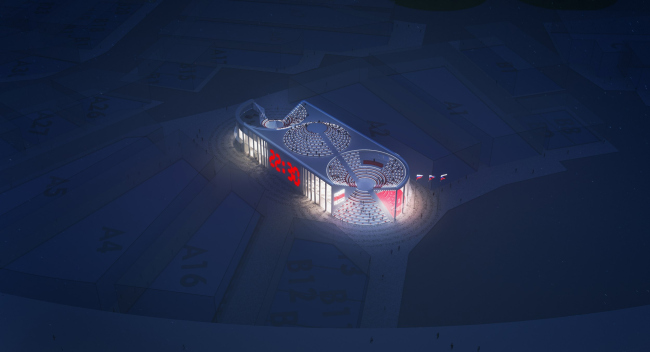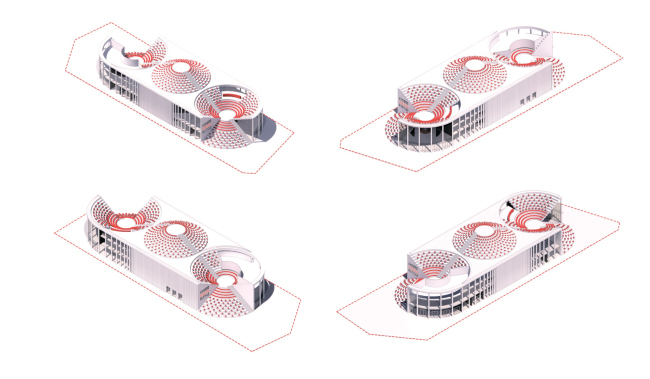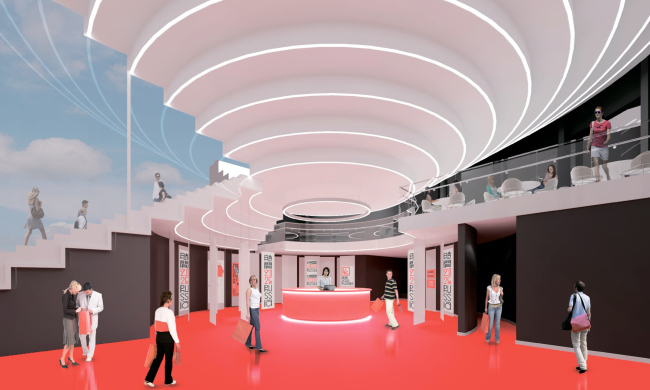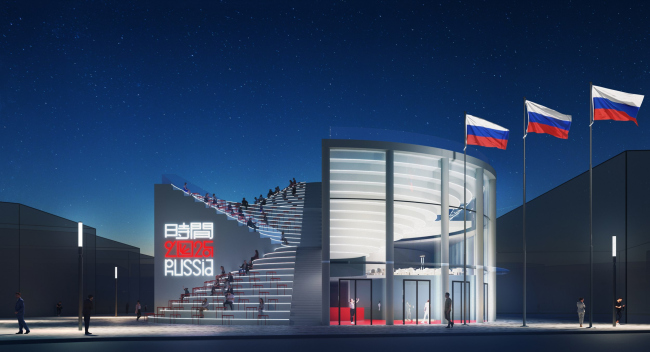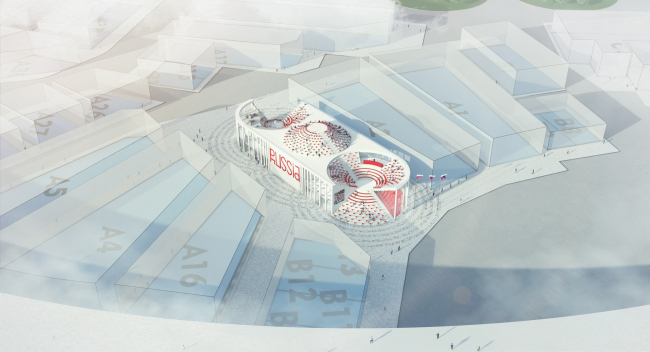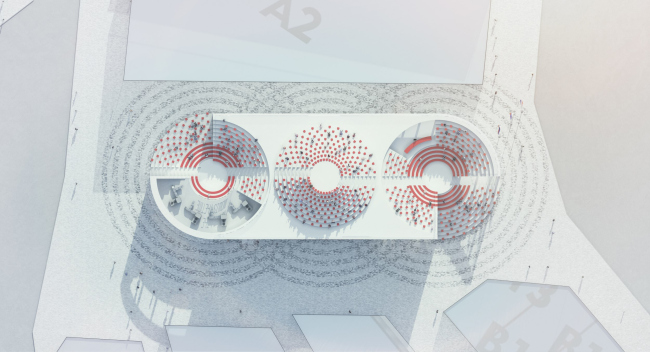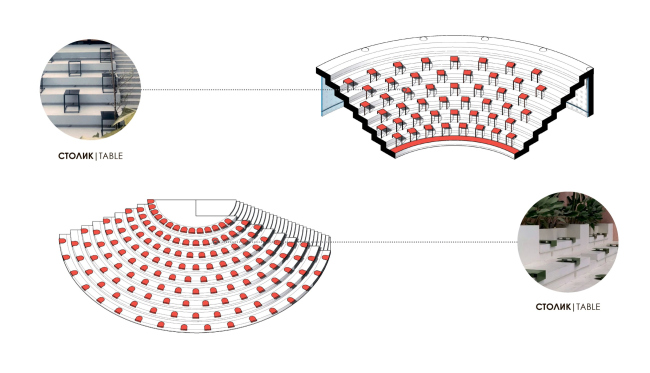|
Published on Archi.ru (https://archi.ru) |
|
| 22.04.2024 | |
|
The Forum of Time |
|
|
Julia Tarabarina |
|
| Architect: | |
| Aleksey Orlov | |
| Studio: | |
| Arena | |
|
The competition project for the Russian Pavilion at EXPO 2025 in Osaka designed by Aleksey Orlov and Arena Project Institute consists of cones and conical funnels connected into a non-trivial composition, where one can feel the hand of architects who have worked extensively with stadiums and other sports facilities. It’s very interesting to delve into its logic, structurally built on the theme of clocks, hourglasses and even sundials. Additionally, the architects have turned the exhibition pavilion into a series of interconnected amphitheaters, which is also highly relevant for world exhibitions. We are reminding you that the competition results were never announced. According to the competition brief, the Russian Pavilion in Osaka was supposed to have been dedicated to the theme of Time. Some participants expressed it by integrating the Tree of Time into the exposition, while others recalled the space-time continuum and hyper transition. Pavilion at World EXPO in Osaka. Time.Copyright: © Arena Project InstituteThe idea of an hourglass with its two cones, as outlined in the brief, was interpreted by the architects through amphitheaters, essentially turning the entire volume into an almost symmetrical alternation of public spaces, designed as cones with stepped surfaces. The curved arc naturally transitions into a concave shape at the point of junction, with a continuous staircase running along them. Pavilion at World EXPO in Osaka. Time.Copyright: © Arena Project InstituteThus, an interesting stereometric intrigue emerges. The elongated section in the project by Arena Project Institute is divided into three squares, each of which is inscribed within a circle. In the central circle stands a cone-shaped mountain (the highest volume here), while on the sides there are recessed funnel cones – not solid, but three-quarters hollow. In short, the pavilion is composed of a series of rhythmically arranged funnels, sequentially inverted up and down. It resembles a mechanism, parts of which are rotated at different but strict angles. The whole picture looks like an enigmatic clock mechanism. Pavilion at World EXPO in Osaka. Time. Axonometric drawingCopyright: © Arena Project InstituteThe inverted stepped pyramids on the inside are also intriguing. Pavilion at World EXPO in Osaka. Time.Copyright: © Arena Project InstituteThe facades on the outer curves under the funnel-like amphitheaters are composed of widely spaced columns, so in one of the versions, the stepped structure of the lower part of the amphitheater-funnel is very well visible. 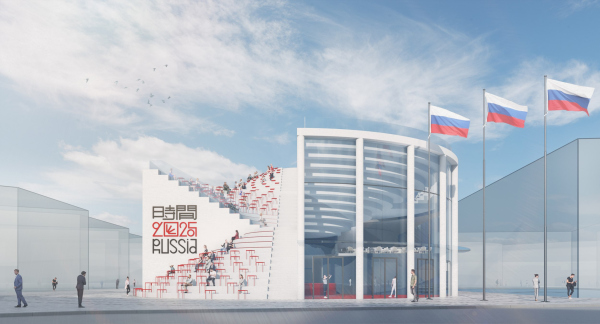 Pavilion at World EXPO in Osaka. Time.Copyright: © Arena Project Institute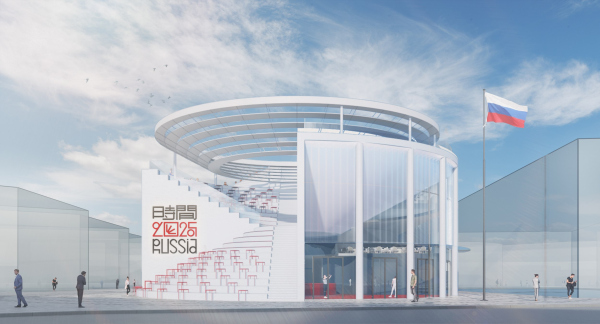 Pavilion at World EXPO in Osaka. Time.Copyright: © Arena Project InstituteAdditionally, the architects proposed to illuminate these funnels from below, further “exposing” the volume to the eyes, and emphasizing this paradoxical union of concave and convex surfaces. Pavilion at World EXPO in Osaka. Time.Copyright: © Arena Project InstituteThis approach resembles the design of large stadiums. There, external walls are often completely or partially omitted, so the stepped descent of the stands is visible from the outside. And at this point we suddenly recall that the authors of this project – Arena Project Institute – are indeed the architects of many sports facilities in the country. We understand that the theme of the stadium is literally growing from the inside of the pavilion, just as the theme of the ancient theater and hippodrome. Pavilion at World EXPO in Osaka. Time.Copyright: © Arena Project InstituteAll archetypes are clearly visible to an experienced observer: the rectangle with rounded ends suggests a hippodrome, the “funnels” resemble a Greek theater (only in this case it is not embedded in a hillside but in the body of the building), and finally, the stepped cone of the center evokes some Eastern-Hellenistic, or even Anatolian associations. On the curves outside, there are light slender columns transitioning into ribs made of architectural concrete. Behind them is a glass shell. All structures were planned to be modular: the metal frame, the concrete elements, and the stained glass fragments. 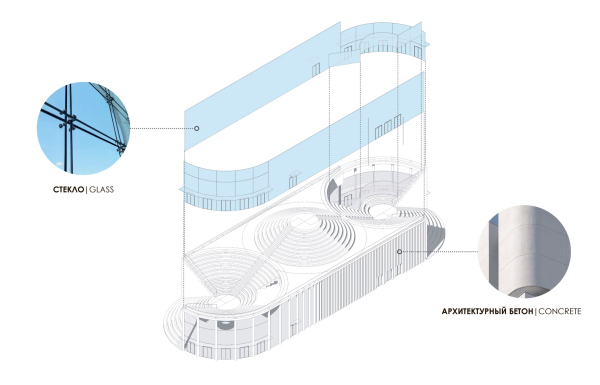 Pavilion at World EXPO in Osaka. Time. The facade materialsCopyright: © Arena Project Institute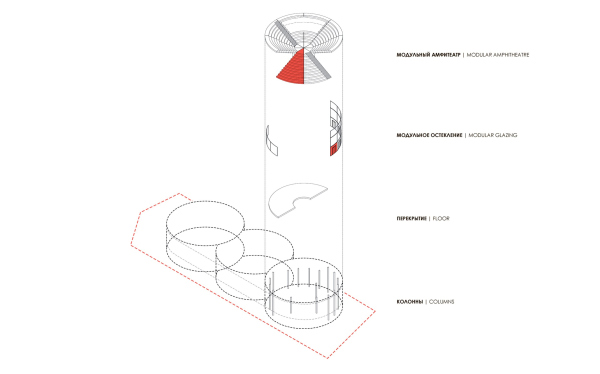 Pavilion at World EXPO in Osaka. Time. Structural modular schemeCopyright: © Arena Project InstituteThe form is remarkable, not immediately understandable, but interesting in terms of structure and internal logic. The authors even compare it to a DNA spiral – it does indeed resemble a DNA spiral in cross-section, and, as already mentioned, it resembles various types of clocks and hourglasses. 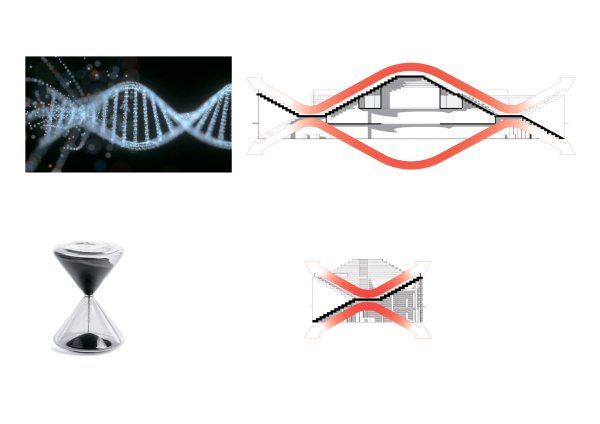 Pavilion at World EXPO in Osaka. Time. The architectural imageCopyright: © Arena Project Institute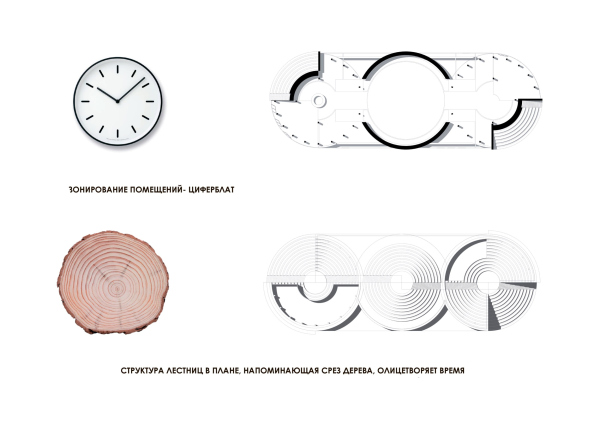 Pavilion at World EXPO in Osaka. Time. The architectural imageCopyright: © Arena Project InstituteIf you were to look from above, the visitors would enter at half past five and exit at half past ten. Or looking at the clock faces, one could imagine it differently: the visitors are allocated a “geometric” half-hour for visiting the pavilion, from 15 minutes to 45. In addition to everything else, if you look from above, the “hourglass” shapes are overlaid with “sundials” – this can be seen from the shadows. Pavilion at World EXPO in Osaka. Time.Copyright: © Arena Project InstituteIn the paving pattern, there are circles radiating from each of the “dials”. Pavilion at World EXPO in Osaka. Time. The territory organizationCopyright: © Arena Project InstituteThus, the main theme of the pavilion is intricately, or, should I even say, passionately – woven into its form. Furthermore, although the architects do not mention this, one can imagine that the three parts of the pavilion represent the past, present, and future, like the entrance, middle, and exit. The Present is the pavilion’s center with its conical dome, a unified space surrounded by a circular balcony and the main exhibit (presumably the Tree of Time, although the architects do not specify this detail). The Present is solid, large, and elevated. We do not fully possess the Past or the Future: one is in our memories, the other is in our plans, and so they are deconstructed, exposed, and designed as sophisticated funnels. But it is through them that we enter and exit – both in the commonly accepted understanding of reality and in the metaphorical understanding of the pavilion. 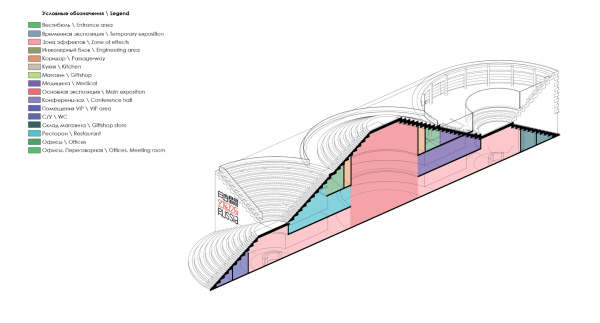 Pavilion at World EXPO in Osaka. Time. Cross sectionCopyright: © Arena Project Institute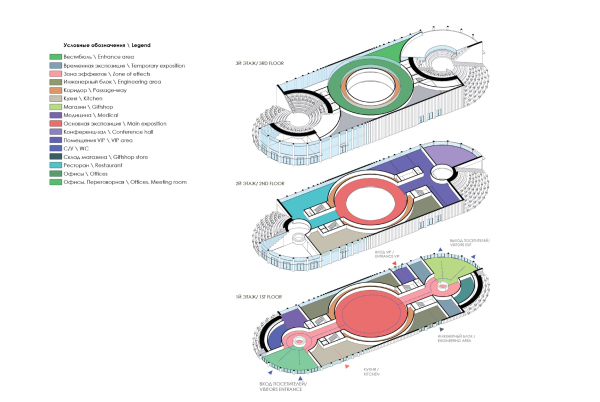 Pavilion at World EXPO in Osaka. Time.Copyright: © Arena Project InstituteThe pyramidal structure of the building, well visible in cross-section, turns out to be very relevant here: ascent, peak, and descent – also a metaphor for time. Back to the amphitheaters, though! All the steps are covered with seats and tables, which does make the pavilion look like a real forum, a public space for many people. Pavilion at World EXPO in Osaka. Time. The amphitheaterCopyright: © Arena Project InstituteHere we should remember that amphitheaters are one of the key, and very popular, themes at any EXPO. Since the exhibition itself is always a large public space, its sub-spaces are also very popular, as they not only provide a way to rest for the tired visitor, but also “activate” their pavilion, making it the center of “bustle” on one hand, and contemplation on the other. In this sense, the project is very much in line with the trends of modern world exhibitions. Equally, the circles, repeated many times in the pavilion and in its paving, resonate with the urban planning idea of Sou Fujimoto, who encircled the exhibition area with a ring. They echo the big ring as small rings to a large one. And, like ripples on water, they are also ticking away the time – drip-drip-drip…  Pavilion at World EXPO in Osaka. Time.Copyright: © Arena Project Institute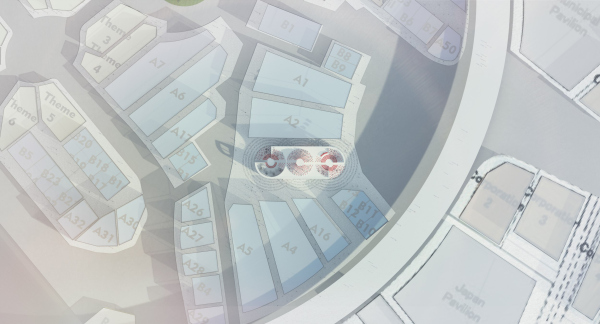 Pavilion at World EXPO in Osaka. Time.Copyright: © Arena Project Institute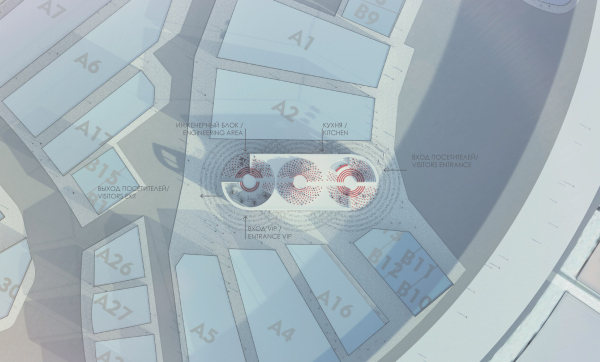 Pavilion at World EXPO in Osaka. Time. The location planCopyright: © Arena Project Institute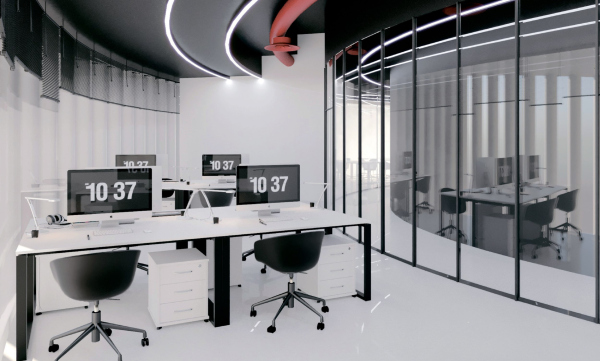 Pavilion at World EXPO in Osaka. Time.Copyright: © Arena Project Institute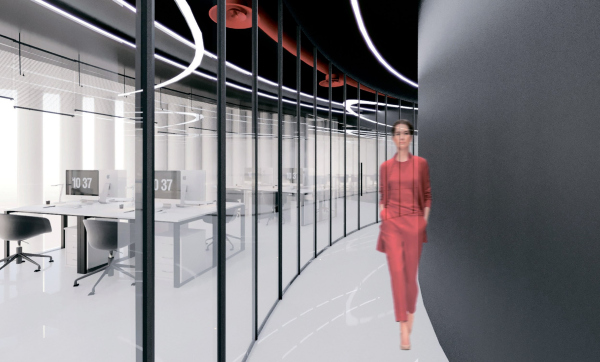 Pavilion at World EXPO in Osaka. Time.Copyright: © Arena Project Institute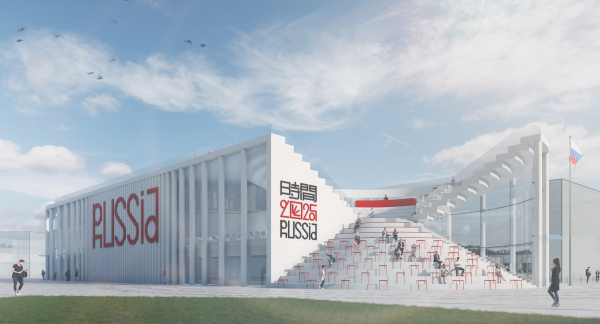 Pavilion at World EXPO in Osaka. Time.Copyright: © Arena Project Institute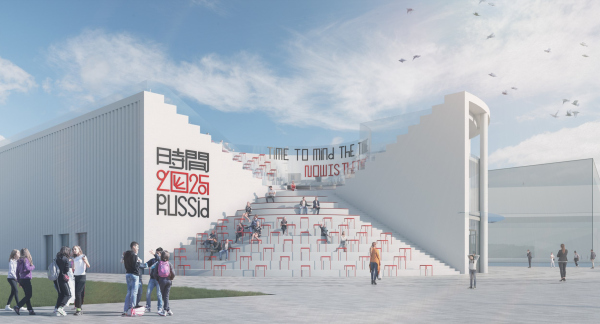 Pavilion at World EXPO in Osaka. Time.Copyright: © Arena Project Institute Pavilion at World EXPO in Osaka. Time. The media facadeCopyright: © Arena Project Institute |
|
